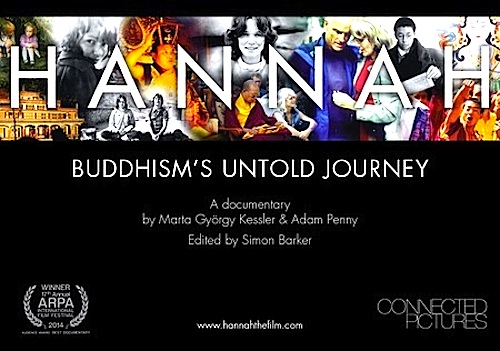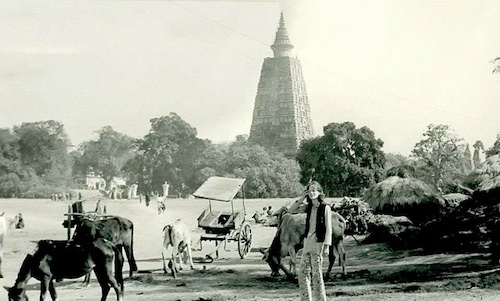 By Joe Bendel. How did an impossibly serene Dane wind up in the middle of a struggle for the soul of Tibetan Buddhism? Along with her husband Ole, Hannah Nydahl earned a place at the table as arguably the religion’s busiest Twentieth Century evangelists. She was scrupulously spiritual rather than ideological, but Nydahl’s travels took her to some of the most politically contentious corners of the globe. Marta György-Kessler & Adam Penny chronicle her life in Hannah: Buddhism’s Untold Journey, which has three more special screenings this Friday and Saturday at the Rubin Museum of Art.
By Joe Bendel. How did an impossibly serene Dane wind up in the middle of a struggle for the soul of Tibetan Buddhism? Along with her husband Ole, Hannah Nydahl earned a place at the table as arguably the religion’s busiest Twentieth Century evangelists. She was scrupulously spiritual rather than ideological, but Nydahl’s travels took her to some of the most politically contentious corners of the globe. Marta György-Kessler & Adam Penny chronicle her life in Hannah: Buddhism’s Untold Journey, which has three more special screenings this Friday and Saturday at the Rubin Museum of Art.
The Nydahls were basically hippies when they somehow beamed themselves to Kathmandu, but thanks to the innocence of youth, the revered Bhutanese lama Lopon Tsechu Rinpoche first took them under his wing, before entrusting their studies to His Holiness the 16th Gyalwa Karmapa, one of the most venerated lines of reincarnated lamas in Tibetan Buddhism. Before his death, the Karmapa sent them back to the West to share their teachings. After a bit of scuffling, the Nydahls soon found they had a talent for outreach, becoming tireless road warriors.
Some of the film’s most intriguing sequences contrast the guileless Nydahls with the extreme socio-political climates they blithely walked into. Bizarrely, the Communist government granted the Nydahls permission to visit pre-martial law Poland, in the vain hope Tibetan Buddhism would undermine the Catholic Church. Needless to say, it was a tense trip, but the bonds of some lasting friendships were formed then.
However, Untold is truly newsworthy for its insider account of the disputed elevation of the 17th Karmapa. It is a case Westerners might be hazily aware of. Communist China (Tibet’s atheist occupiers, who had previously denied the legitimacy of reincarnation) officially recognized one Karmapa, while leaders in exile recognized another. György-Kessler & Penny provide full context to the controversy, explaining the implications of each development, while largely relying on footage of the Nydahls recorded in-the-moment.
To their credit, the Nydahls did not rush to judgement. However, when the time came, they acted decisively to protect His Holiness, Trinley Thaye Dorje, the rival of China’s compliant candidate. Just when you thought the Communist government could not sink any lower, György-Kessler & Penny document thuggish behavior that manages to lower the bar even further.

For those who are fascinated by Tibetan Buddhism and Chinese geo-politics, the Karmapa crisis is clearly the film’s centerpiece. However, for the more right-brained and sentimentally inclined, the grand romance shared by the Nydahls always takes center stage. As a former friend and student of Hannah Nydahl, György-Kessler clearly has a deep appreciation for them as individuals. The portrait that emerges is sensitively rendered, but still quite intimate.
Frankly, the Nydahls were disgustingly attractive, charming, and calm, but they used their gifts selflessly on behalf of their faith and for the sake of others. You can get a sense of their stature from the interviews His Holiness, the 17th Karmapa granted the filmmakers (but not the other guy). There is a lot to learn from Untold, but it is also a touching story. Highly recommended, Hannah: Buddhism’s Untold Journey screens again Friday night (5/8) and twice on Saturday (5/9) at the Rubin Museum of Art, Manhattan’s home for Himalayan art and culture.
LFM GRADE: A-
Posted on May 7th, 2015 at 11:50am.